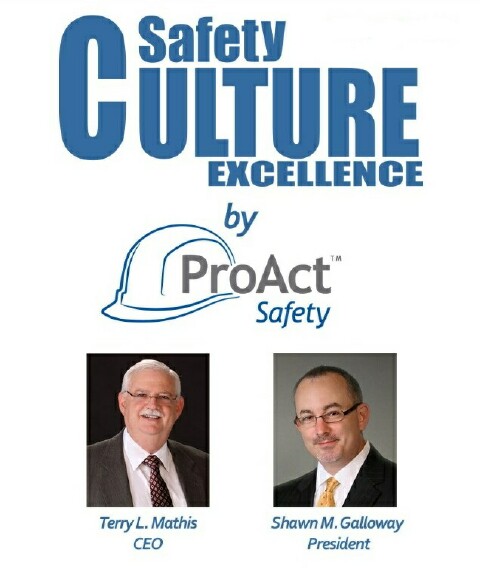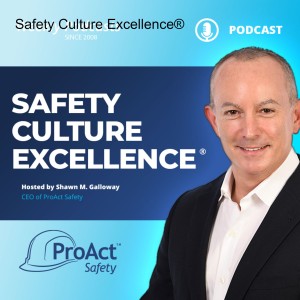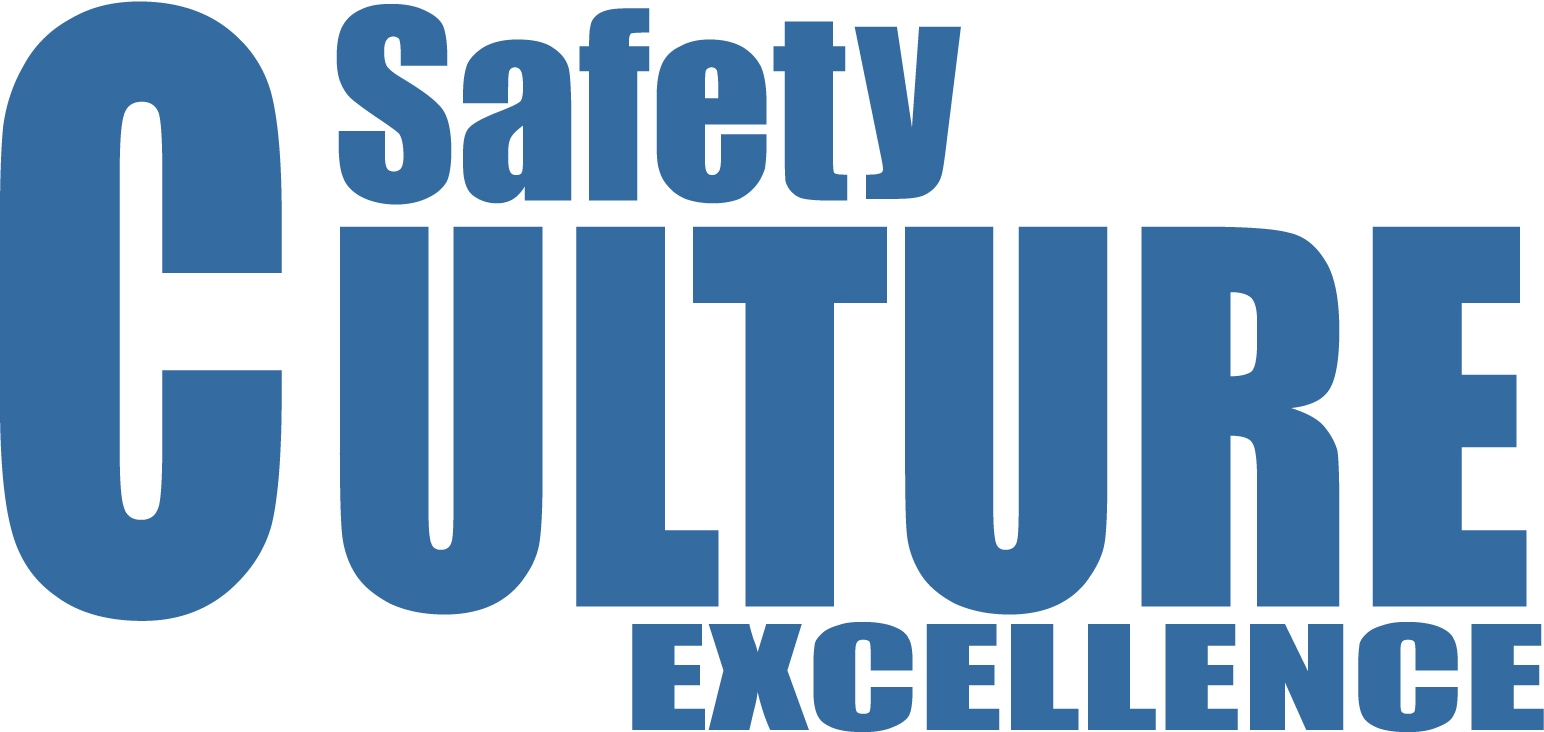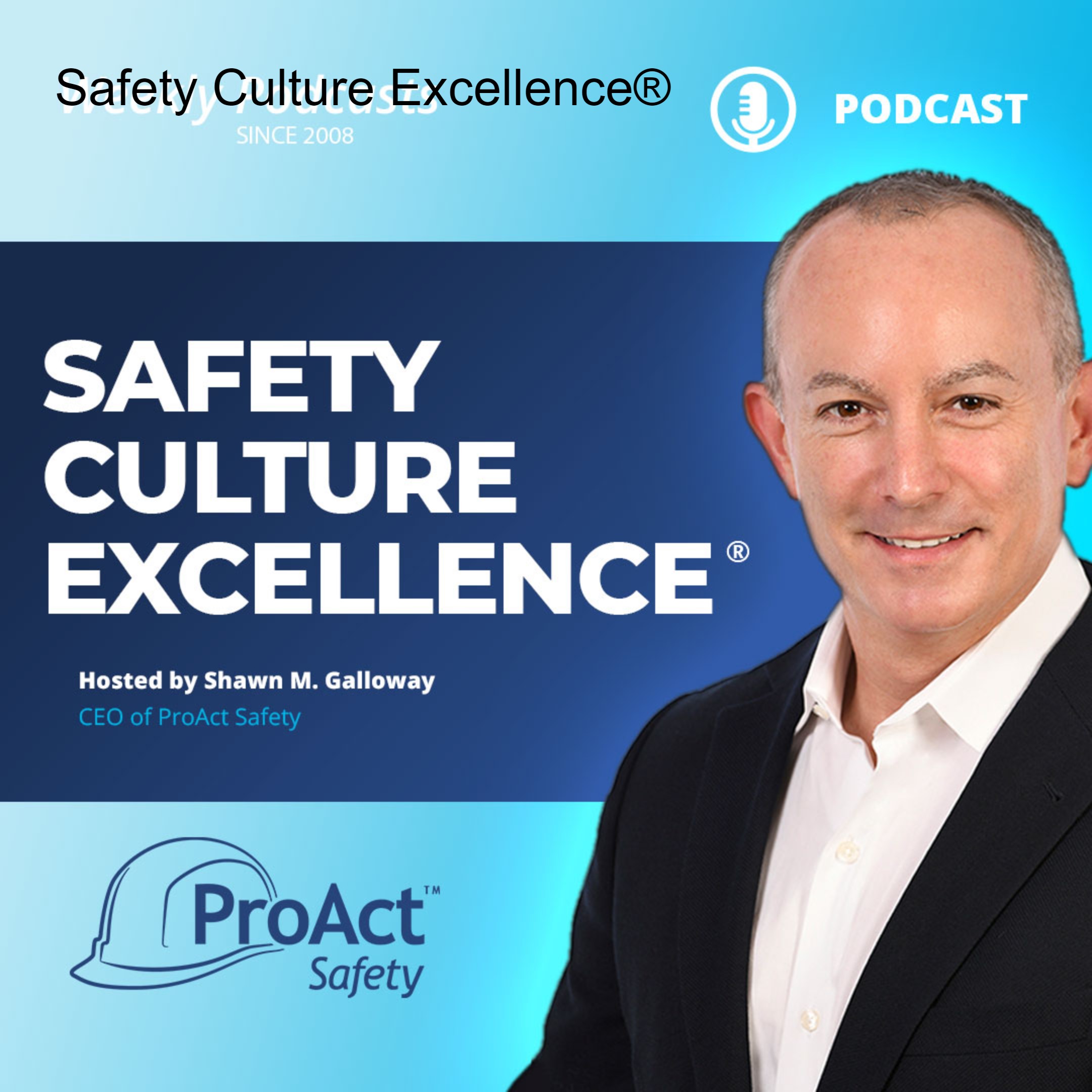Episodes

Monday Dec 30, 2013
322 - Is the Term Accident Still Acceptable?
Monday Dec 30, 2013
Monday Dec 30, 2013
Greetings everyone, this podcast recorded while in Canmore, Alberta. I’d like to share an article Terry Mathis wrote, published October 2013 in EHS Today Magazine. The published article can either be found on the magazine’s website or under Insights at www.ProActSafety.com.
I hope you enjoy the podcast this week. If you would like to download or play on demand our other podcasts, please visit the ProAct Safety’s podcast website at: http://www.safetycultureexcellence.com. If you would like access to archived podcasts (older than 90 days – dating back to January 2008) please visit www.ProActSafety.com/Store. For more detailed strategies to achieve and sustain excellence in performance and culture, pick up a copy of our book, STEPS to Safety Culture Excellence - http://proactsafety.com/insights/steps-to-safety-culture-excellence
Have a great week!
Shawn M. Galloway
ProAct Safety

Monday Dec 23, 2013
321 - Is Failing Less a Better Safety Goal Than Achieving Success?
Monday Dec 23, 2013
Monday Dec 23, 2013
Greetings everyone, this podcast recorded while in Chicago, IL. I’d like to share an article I wrote, published October 2013 in OHS Magazine. The published article can either be found on the magazine’s website or under Insights at www.ProActSafety.com.
I hope you enjoy the podcast this week. If you would like to download or play on demand our other podcasts, please visit the ProAct Safety’s podcast website at: http://www.safetycultureexcellence.com. If you would like access to archived podcasts (older than 90 days – dating back to January 2008) please visit www.ProActSafety.com/Store. For more detailed strategies to achieve and sustain excellence in performance and culture, pick up a copy of our book, STEPS to Safety Culture Excellence - http://proactsafety.com/insights/steps-to-safety-culture-excellence
Have a great week!
Shawn M. Galloway
ProAct Safety

Wednesday Dec 04, 2013
Injuries Aren’t the Only Kind of Accidents
Wednesday Dec 04, 2013
Wednesday Dec 04, 2013
When you think about the title of this piece, the first thing that comes to most people’s minds is an accident that produced property damage but no injuries. While that is a common example of this principle, it is not the only one. Virtually any undesired, unplanned, unexpected result of a work process is accidental. It could be argued that anything that did not turn out as planned is an accident.
When you think about it this way, people invest in the wrong stocks, elect the wrong people to office, and marry the wrong spouses from time to time. We don’t blame such accidents exclusively on the stock market, the government, or dating services. Likewise when an organization has a rash of injuries, it might not be exclusively the fault of the safety programs and specialists.
The real key to understanding and applying this principle is simply that good management must anticipate the multiple ways that processes can produce unwanted results and prevent them from doing so. When you think this way, safety is not a touchy, feely specialty to be delegated. It is a principle of good management.
Managers must constantly be on guard against the ways in which their processes can fail or go awry. Such events can be caused by people, machines, conditions, process flaws or combinations of these. Designing and constantly improving all the aspects of business processes is the job of leaders, managers and supervisors. Blaming workers or delegating problem areas seldom creates organizational excellence. It is crucial to remember that when the goose quits laying golden eggs, you need better goose management: not an egg specialists.
-Terry L. Mathis
Terry L. Mathis is the founder and CEO of ProAct Safety, an international safety and performance excellence firm. He is known for his dynamic presentations in the fields of behavioral and cultural safety, leadership, and operational performance, and is a regular speaker at ASSE, NSC, and numerous company and industry conferences. EHS Today listed Terry as a Safety Guru in ‘The 50 People Who Most Influenced EHS in 2010, 2011 and 2012-2013. He has been a frequent contributor to industry magazines for over 15 years and is the coauthor of STEPS to Safety Culture Excellence, 2013, WILEY.

Wednesday Nov 27, 2013
Leading vs. Lagging Indicators in Safety
Wednesday Nov 27, 2013
Wednesday Nov 27, 2013
As more and more leaders and safety professionals realize the limitations of reactive safety, they search for leading indicators to help them manage safety more proactively. This thinking fueled the concept that lagging indicators alone, are not truly representative of safety performance, nor are they predictive or prescriptive.
The first round of so-called “leading indicators” was little more than a measurement of safety-related activities: hours of safety training, attendance at safety meetings, participation in safety programs, etc. OSHA’s crackdown on incentives that could potentially suppress reporting of accidents drove many organizations to base their incentives on these activity metrics rather than simply not having an accident.
When behavior-based safety became the rage, the measurement of behaviors from observations came to be thought of as a leading indicator. As safety culture became a buzz phrase, perception surveys gained in popularity and came to be considered another potential leading indicator. The search for meaningful leading indicators goes on because no one of these has proven adequate in predicting and preventing injuries.
Where none of these alone succeed, all of them together potentially can. A balanced-scorecard approach in which the metrics not only complement, but predict each other has proven quite effective in proactively predicting how to prevent accidents. When you measure how much activity it takes to change perceptions, how much of a change in perceptions it takes to change behaviors, and how much behavior change it takes to change the lagging indicators, you begin to truly measure the effectiveness of safety efforts. Just as balanced scorecards have revolutionized strategic management, with our most successful clients, balanced scorecards for safety have proven to have a transformational impact on safety management. How balanced are your measurements?
-Terry L. Mathis
Terry L. Mathis is the founder and CEO of ProAct Safety, an international safety and performance excellence firm. He is known for his dynamic presentations in the fields of behavioral and cultural safety, leadership, and operational performance, and is a regular speaker at ASSE, NSC, and numerous company and industry conferences. EHS Today listed Terry as a Safety Guru in ‘The 50 People Who Most Influenced EHS in 2010, 2011 and 2012-2013. He has been a frequent contributor to industry magazines for over 15 years and is the coauthor of STEPS to Safety Culture Excellence, 2013, WILEY.

Monday Nov 18, 2013
316 - Mergers and Acquisitions: Aligning Your Next Culture
Monday Nov 18, 2013
Monday Nov 18, 2013
Greetings everyone, this podcast recorded while in Craig, CO. I’d like to share an article I wrote, published September 2013 in BIC Magazine. The published article can either be found on the magazine’s website or under Insights at www.ProActSafety.com.
I hope you enjoy the podcast this week. If you would like to download or play on demand our other podcasts, please visit the ProAct Safety’s podcast website at: http://www.safetycultureexcellence.com. If you would like access to archived podcasts (older than 90 days – dating back to January 2008) please visit www.ProActSafety.com/Store. For more detailed strategies to achieve and sustain excellence in performance and culture, pick up a copy of our book, STEPS to Safety Culture Excellence - http://proactsafety.com/insights/steps-to-safety-culture-excellence
Have a great week!
Shawn M. Galloway
ProAct Safety

Friday Oct 18, 2013
Misunderstanding Hazards and Risks
Friday Oct 18, 2013
Friday Oct 18, 2013
I heard a good analogy recently about the difference between hazards and risks. “Hazards are the sharks you spot in ocean while standing on the shore. They become Risks when you get in the water.” How well do you help those you lead, understand, identify, and respond to the differences?
With good intentions, many organizations prompt activities to purposefully and proactively identify potential hazards in the workplace. While this is admirable, it becomes a complex issue when there isn’t a shared understanding of what a hazard is and isn’t, and how some turn into risk. But, not all risk will turn into incidents and injuries. Further, if there is a shared belief that “safe means zero risk and safety first”, or “safety is our number one priority”; might there be mixed signals sent?
Consider how this might be interpreted, “They say our goal is zero injuries and zero risks and that ‘safety first’ means we are controlling all the risks, yet we have brought several to management’s attention with no action!” This isn’t just hyperbole, this misunderstanding was the result of a conversation with a key union official within a client organization.
Let’s provide some further context on hazards and risk. Wikipedia provides a good definition of hazard. “A hazard is a situation that poses a level of threat to life, health, property, or environment. Most hazards are dormant or potential, with only a theoretical risk of harm; however, once a hazard becomes "active", it can create an emergency situation. A hazardous situation that has come to pass is called an incident. Hazard and possibility interact together to create risk.” Note the key points in this, “most hazards are… only a theoretical risk of harm; however, once a hazard becomes ‘active’…”
A further search in Wikipedia provides another good explanation of risk. “Risk is the potential of loss (an undesirable outcome, however not necessarily so) resulting from a given action, activity and/or inaction. The notion implies that a choice having an influence on the outcome sometimes exists (or existed). Potential losses themselves may also be called "risks". Any human endeavor carries some risk, but some are much riskier than others.” Again, some key points to tease out: “Risk is the potential of loss… resulting from a given action”. Moreover, it points out “Any human endeavor carries some risk…”
Some safety advocates propose there is little point in debating terminology. I strongly disagree. How common language is used influences beliefs and behaviors within the culture. The English language has many different meanings for the same word. Have you ever used a word or phrase that was interpreted incorrectly? Of course you have. You know how important it is to use the correct words when communicating with your family. Why should our dialogue within safety be less important? After all, isn’t it our number one priority? Or wait, is it a core value?
- Shawn M. Galloway
Here is a short video on this topic: http://youtu.be/_BrpiL4rxgk
Shawn M. Galloway is the President of ProAct Safety and the coauthor of two books, his latest published Feb 2013 by Wiley is STEPS to Safety Culture Excellence. As an internationally recognized safety excellence expert, he has helped hundreds of organizations within every major industry to achieve and sustain excellence in performance and culture. He has been listed in this year’s National Safety Council Top 40 Rising Stars, EHS Today Magazine’s 50 People Who Most Influenced EHS and ISHN Magazine’s POWER 101 – Leaders of the EHS World and again in the recent, elite list of Up and Coming Thought Leaders. In addition to the books, Shawn has authored over 300 podcasts, 100 articles and 80 videos on the subject of safety excellence in culture and performance.

Monday Sep 23, 2013
308 - The Perceptions That Shape Safety Excellence
Monday Sep 23, 2013
Monday Sep 23, 2013
Greetings everyone, this podcast recorded while in Starkville, Mississippi. I’d like to share an article written by Terry Mathis, published June 2013 in EHS Today Magazine. It was titled, The Perceptions That Shape Safety Excellence. The published article can either be found on the magazine’s website or under Insights at www.ProActSafety.com. I hope you enjoy the podcast this week. If you would like to download or play on demand our other podcasts, please visit the ProAct Safety’s podcast website at: http://www.safetycultureexcellence.com. If you would like access to archived podcasts (older than 90 days – dating back to January 2008) please visit www.ProActSafety.com/Store. For more detailed strategies to achieve and sustain excellence in performance and culture, pick up a copy of our book, STEPS to Safety Culture Excellence - http://proactsafety.com/insights/steps-to-safety-culture-excellence Have a great week! Shawn M. Galloway ProAct Safety

Monday May 13, 2013
289 - Are All Accidents Preventable?
Monday May 13, 2013
Monday May 13, 2013
Are All Accidents Preventable? Terry L. Mathis, CEO of ProAct Safety shares some very important thoughts on this subject as well as some strategies and language to address this vital perception within your safety culture. ProAct Safety provides more strategies in the area of safety culture and safety excellence in the public domain than any other firm, organization or association. For access to increased, advanced value in the form of videos, podcasts, public workshops and seminars, please visit www.ProActSafety.com/Store This video can also be watched on YouTube: http://www.youtube.com/watch?v=pGJ-gK6x0WM

Monday Oct 01, 2012
257 - Managing People With Animal Science
Monday Oct 01, 2012
Monday Oct 01, 2012
Greetings everyone, this podcast recorded while in Chicago, IL. For the podcast this week I’d like to share an article written by Terry Mathis, published in July 2012 by IndustryWeek. It was titled, Managing People With Animal Science. The published article can either be found at www.IndustryWeek.com or under Insights at www.ProActSafety.com.
I hope you enjoy the podcast this week. If you would like to download or play on demand our other podcasts, please visit the ProAct Safety’s podcast website at: http://www.safetycultureexcellence.com. If you would like access to archived podcasts (older than 90 days – dating back to January 2008) please contact us at podcast @ ProActSafety.com.
Have a great week!
Shawn M. Galloway
ProAct Safety, Inc

